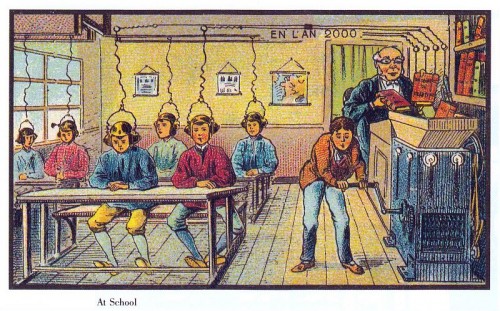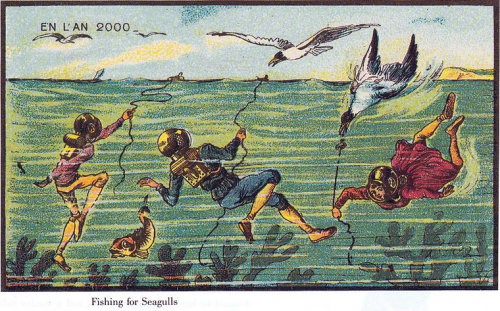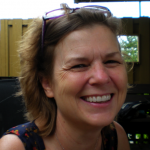TW Opinion by Lorraine Berry
Creative Writing—and Reading—as a Door to Critical Thinking
I teach creative writing to college students, and here’s what I see each semester when I look out at the crop of new faces: terror. In the past few years, many students have told me they don't want to graduate, even though they're seniors. They're convinced they‘ll end up jobless and living in their parents' basements.
It's not just the shaky economy that's to blame. I believe universities have created this problem by changing their basic mission, the mission I understood college to have when I was a student in the 1980s. These days, universities are viewed as job factories, and everyone is suddenly asking if it's even worth it.

This depressing emphasis on punching your ticket for the job market not only undermines why college is worthwhile, it misinterprets what students really need when they go to work. More than anything, they need to know how to think. In the post-2000 professional world, they’ve got to master the ability to take in information, examine it, and determine whether it presents objective facts, interpretations of facts, or, to put it bluntly, bullshit.
In other words, the college experience fosters critical thinking—and we need all the critical thinking we can get right now. Being able to tell bullshit from fact is a skill that’s especially relevant during the presidential election season.
But when students first hear the term “critical thinking,” they sometimes assume I'm asking them to trash what they're reading. The very first time I taught, when I asked a class of freshmen for a “critical response” to a piece of writing, one wrote, "This sucks."
Of course, critical thinking not only requires that the BS detector be turned outward—catching the way someone is manipulating the story—but also inward. To truly get to the bottom of biases, we have to recognize when we’re complicit in our own longing to believe what we read or to make snap judgments like “This sucks.”
That’s why a creative writing class can open so many doors for students. Writing workshops focus on how writing works, emphasizing analysis as well as art. And discussion of another writer’s intent pushes students to get at their own biases.
The first thing I tell students in my creative nonfiction course is that they can’t be writers if they don’t read. I assign four or five memoirs grouped around a theme (such as "alienation and exile") and alternate weeks of reading with weeks of writing exercises. To my surprise, I’ve found that the most important work occurs during the reading weeks. For each of those class sessions, students are required to bring in two questions to pose to the rest of the class. My role is to get them talking to one another, grilling each other on their various assumptions about what they've read.

On a good day, I ask questions only in response to comments, never offering my own views. On a bad day—and there have been a few—I lecture students on their unwillingness to do the work of engaging in the reading. If a book bores you, I tell them, that means there's something in it you don't like, so let's start there.
One semester, my class read The Glass Castle, Jeanette Walls's 2006 memoir about growing up with parents who often illegally squatted on others’ property. Walls is white and is now an award-winning writer.
Next, I had them read Brothers and Keepers, John Edgar Wideman's 2005 memoir about growing up poor in Pittsburgh. Wideman, who is African American, went on to become a college professor and writer, while his brother is serving a long jail sentence for murder.
That semester, only one student was black. He confided his fury to me at the way the white students equated these two memoirs. "Don't they see that Walls's family chose to be homeless, whereas Wideman's family was caught in an institutional structure that kept them locked into poverty?” he asked through clenched teeth. “Don’t they see that Wideman's getting out is the exception, not the rule?"
The next class meeting, these were the first questions we discussed. A number of students insisted at first that we really do live in a post-racial society—one in which they've never witnessed an overt act of racism. My student of color pointed out that they don't notice racism because, for the most part, they're not affected by it.
I'd been stunned, too, by the response of those white students, many from homes on Long Island. They seemed blind to their own white privilege. They never once questioned how Walls's race made her family’s choices so much easier. Imagine a black family showing up in a small town and blending in.
The passion with which their black classmate spoke of his own experiences opened up this discussion. The white students could see they’d been biased in identifying with Walls's narrative. They acknowledged that the same unconscious assumptions had made them criticize Wideman for "complaining."
I could not, as their professor, lecture them on the evils of racism in America. But I could ask them questions that got them to realize their lives don’t necessarily reflect everyone else’s. White students tend to assume (and I’m guilty of this myself, unless I pay attention) that a white writer is conveying universal truths. For them, a minority writer’s perspective is "other," even if they’re not conscious of such a bias. My aim is to break down those assumptions without resorting to lectures that many would tune out.
That is, I want them to learn how to think—to examine their own beliefs.
As we work our way through the semester, students start to identify the way a particular writer may be manipulating them. We talk about whether the techniques used to achieve that end are successful and whether understanding the art of writing and persuasion influences our response to a book.
We've become a nation that relies on sound bites and memes to draw conclusions about issues that require rigorous analysis. But at least I know that each semester I release into the campus community a couple dozen students who have learned how to read between the lines. Their BS detectors are in good working order—and, most important, they’ve gotten better at examining their own bullshit. My hope is that they continue to hone those skills as they go out into the world.
Recently, I saw a gratifying Facebook post by one of my former students. "Is it wrong," she wrote, "that I'm sitting here reading my astronomy textbook, and instead of memorizing facts, I'm examining sentence structure and style, trying to figure out what the author is trying to convince me of?"
Like.
Publishing Information
- The Glass Castle: A Memoir by Jeanette Walls (Scribner, 2006).
- Brothers and Keepers: A Memoir by John Edgar Wideman (Mariner, 2005).
Lorraine Berry is an associate editor at Talking Writing. She teaches creative nonfiction at a college in the Finger Lakes region of New York.
"I knew what shell shock looked like now, how eyes go blank, empty of light. Hands flail at the air. A vacuum forms in a room of nineteen young students who have just realized they are mortal.” — “Earth’s the Right Place for Love”

